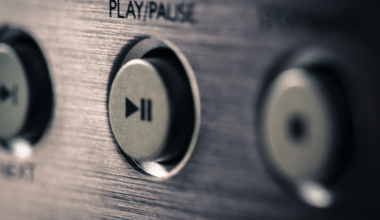Vocal exercises are essential for anyone who loves to sing, whether you’re a beginner or a professional. Just like athletes train their bodies to stay in shape, singers need to train their voices to stay strong and flexible. Without proper training, your voice can get tired, strained, or even damaged.
In this guide, we’ll explore simple and effective vocal exercises you can do to improve your singing. We’ll also discuss why these exercises are so important and how they can help you reach your singing goals.
What Are Vocal Exercises?
1.1 Understanding Vocal Exercises
Vocal exercises are like workouts for your voice. They help strengthen your vocal cords, improve your breathing, and make your voice sound better. These exercises are not just for professional singers—they’re for anyone who wants to sound better and feel more confident while singing.
1.2 Benefits of Vocal Exercises
- Stronger Voice: Build a voice that can handle long performances without getting tired.
- Better Pitch: Stay on key and hit the right notes every time.
- Improved Range: Sing higher or lower notes with ease.
- Clearer Tone: Make your voice sound smooth and pleasant.
How to Prepare for Vocal Exercises
2.1 Stay Hydrated
Drinking water keeps your vocal cords healthy. Aim to drink warm or room-temperature water before you sing. Avoid cold water as it can tighten your muscles.
2.2 Find a Quiet Space
Choose a quiet place where you can practice without distractions. Standing in front of a mirror can help you watch your posture and mouth movements.
2.3 Warm Up Your Body
Relax your body before you start. Do some light stretches or roll your shoulders to release tension. Singing is a full-body activity, and a relaxed body helps create a relaxed voice.
Simple Vocal Warm-Ups
3.1 Why Warm-Ups Are Important
Warm-ups prepare your vocal cords for singing. Skipping warm-ups can strain your voice and make singing harder. Think of them as stretching before a workout.
3.2 Easy Warm-Up Exercises
- Humming: Start by humming softly. Move up and down the scale. This warms up your vocal cords gently.
- Lip Trills: Blow air through your lips while making a sound, like a “brrr.” This loosens up your voice and helps with breath control.
- Sirens: Slide your voice from a low note to a high note and back down. It should sound like a police siren.
Breathing Exercises for Singers
4.1 Why Breathing Matters
Good breathing is the foundation of great singing. Without proper breath control, it’s hard to hold notes, sing powerfully, or stay on pitch.
4.2 Diaphragmatic Breathing
This is the best way to breathe for singing. It uses your diaphragm, a muscle below your lungs, to control airflow.
- Sit or stand up straight.
- Place one hand on your chest and the other on your stomach.
- Breathe in deeply. Your stomach should rise while your chest stays still.
- Exhale slowly.
4.3 Breathing Exercises
- Counted Breaths: Breathe in for 4 counts, hold for 4 counts, and exhale for 4 counts. Gradually increase the count as you improve.
- Hissing Exercise: Inhale deeply and exhale slowly while making a “sss” sound. Try to make the sound last as long as possible.
Exercises to Improve Pitch
5.1 What Is Pitch?
Pitch refers to how high or low a note sounds. Staying on pitch means hitting the right note without going flat (too low) or sharp (too high).
5.2 Pitch-Improvement Exercises
- Sliding Scales: Sing scales (like Do-Re-Mi) while sliding smoothly from one note to the next.
- Matching Notes: Use a piano or a pitch app. Play a note and try to match it with your voice.
- Interval Training: Practice singing the space between two notes. For example, sing a low note, then jump to a higher one.
How to Expand Your Vocal Range
6.1 Why Range Matters
A wide vocal range allows you to sing more songs and impress your audience. Expanding your range takes time, but it’s worth the effort.
6.2 Range-Expansion Exercises
- Octave Glides: Start on a low note and glide up to a high note, then back down.
- Falsetto Practice: Sing in a light, airy tone to strengthen your higher range.
- Descending Scales: Start on a high note and sing downward, focusing on clarity and control.
Articulation and Diction Exercises
7.1 Why Clear Speech Is Important
Good articulation helps your audience understand the words you’re singing. It also makes your performance sound polished and professional.
7.2 Exercises for Clear Diction
- Tongue Twisters: Say phrases like “Peter Piper picked a peck of pickled peppers” slowly and clearly. Gradually speed up.
- Vowel Practice: Sing the vowels (A, E, I, O, U) on different pitches. Focus on making each sound crisp and distinct.
Advanced Vocal Techniques
8.1 Vibrato
Vibrato is a natural, slight variation in pitch that adds richness to your singing.
- To practice, sing a note and gently wobble your pitch up and down. Start slow and speed up as you gain control.
8.2 Riffs and Runs
Riffs and runs are quick, decorative notes often used in pop and R&B. Break them into smaller parts, practice slowly, and gradually increase speed.
Tips for Maintaining Vocal Health
9.1 Vocal Health Tips
- Drink plenty of water.
- Avoid yelling or talking loudly for long periods.
- Rest your voice if it feels tired or strained.
9.2 Foods That Help Your Voice
- Warm Honey Water: Soothes your throat.
- Ginger Tea: Reduces inflammation.
- Fruits and Vegetables: Keep your body and voice hydrated.
Building a Vocal Exercise Routine
10.1 Daily Practice Plan
- Warm-Ups: Start with 5-10 minutes of humming, lip trills, and sirens.
- Breathing: Spend 10 minutes on diaphragmatic breathing and hissing exercises.
- Pitch Training: Practice scales and intervals for 10 minutes.
- Song Practice: Work on a song, focusing on technique and emotion.
10.2 Staying Consistent
Set aside 20-30 minutes daily for vocal exercises. Progress takes time, so be patient and keep practicing.
Conclusion
Vocal exercises are the key to unlocking your voice’s full potential. Whether you’re a beginner or an experienced singer, practicing regularly will help you sing with more confidence and ease. Start with the basics, stay consistent, and watch your voice transform.
Related Articles:
For further reading, explore these related articles:
- How the Music Industry Works?
- Maximize Your Music Career with JioSaavn Artist Dashboard: A Comprehensive Guide
- Promoting Music on JioSaavn: A Complete Guide for Independent Artists
For additional resources on music marketing and distribution, visit Deliver My Tune.






